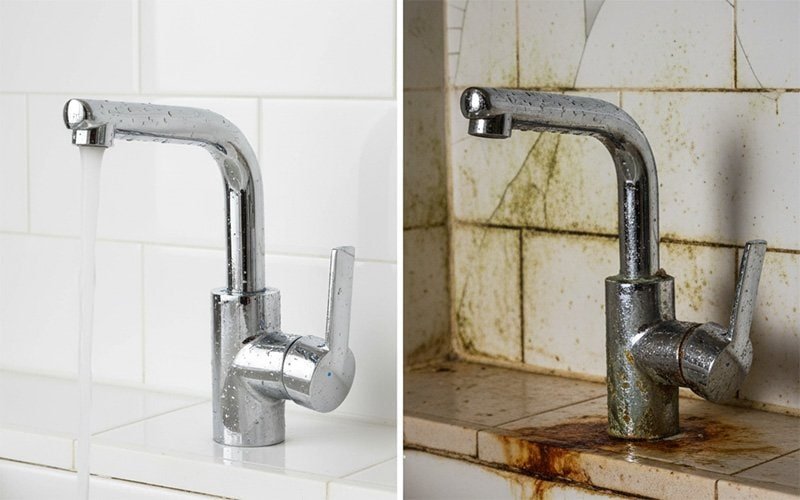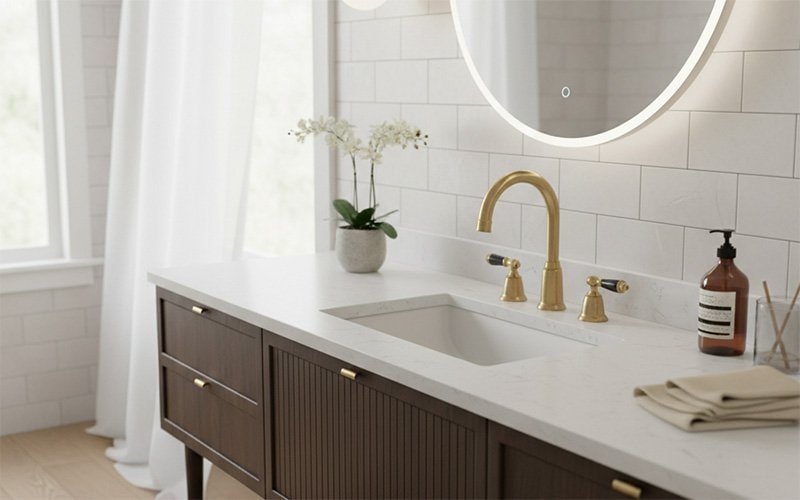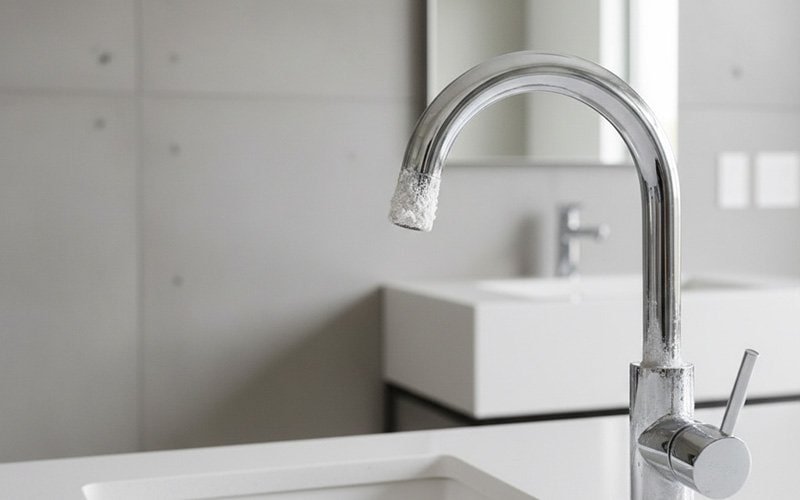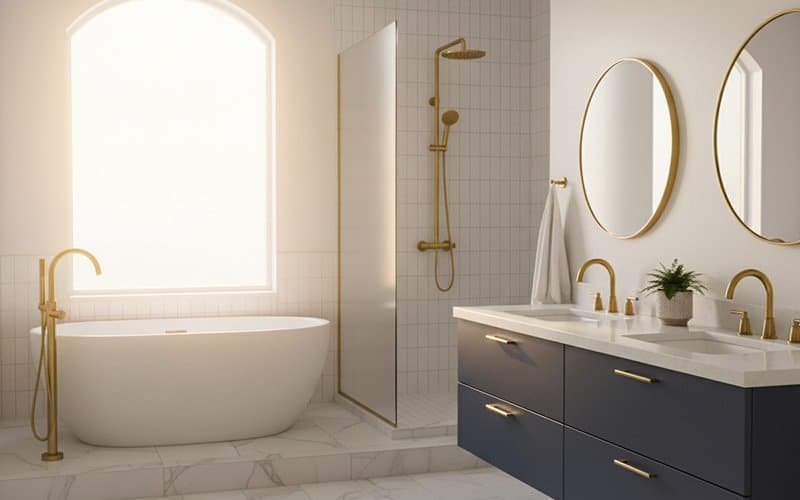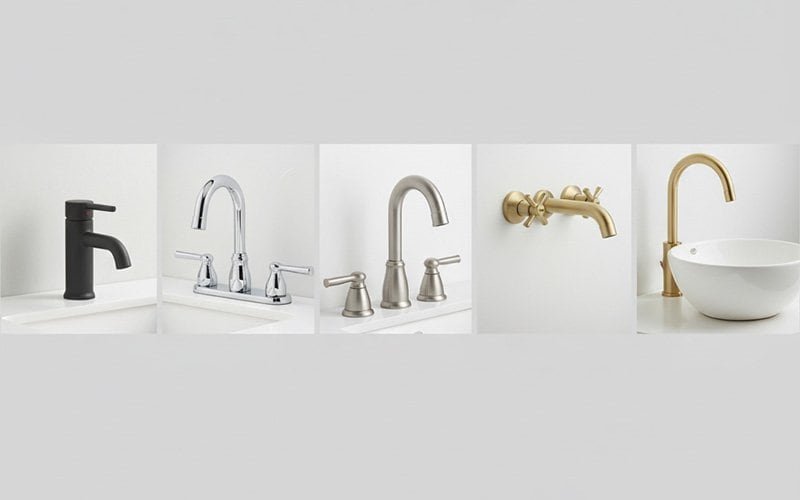Table of Content
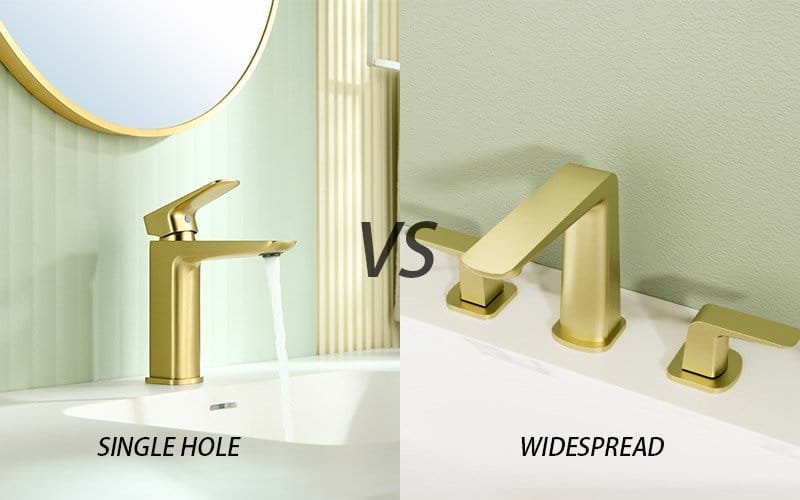
The choice between a single-hole faucet and a widespread model can feel complicated. This guide will break down the key differences between them, step-by-step. We’ll cover aesthetics, cost considerations, installation, and cleaning, providing information to help you make an informed choice.
By the end, you should have a clearer idea of which faucet type is a suitable fit for your bathroom project.
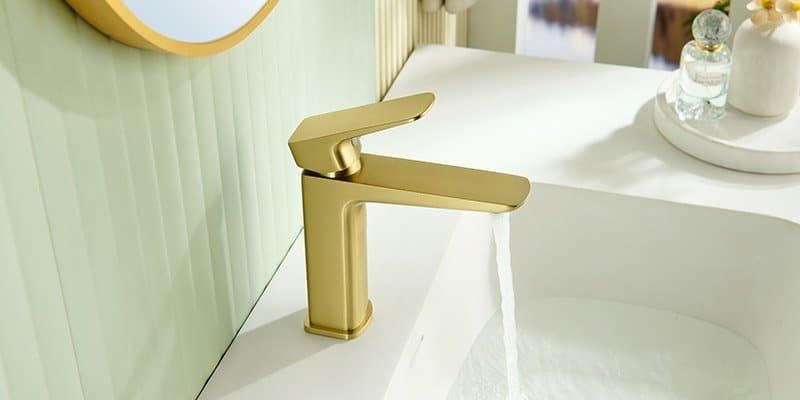
First, What Exactly Is a Single-Hole Faucet?
A single-hole faucet is exactly what its name suggests: it’s a faucet where the spout and the handle are all combined into one single unit. This entire piece mounts to your sink or countertop through just one pre-drilled hole.
Most of the time, you’ll see these with a single lever that you can move up and down to control the water flow and side-to-side to mix the hot and cold water to your desired temperature.
The Good Stuff (Pros)
The Not-So-Good Stuff (Cons)
The popularity of single-hole faucets is not just a random trend; it is connected to bigger changes in how we design and live in our homes. People like minimalist and contemporary interior design, which has clean lines and uncluttered surfaces.
This makes the sleek profile of a single-hole faucet a natural choice. At the same time, many new homes and apartments are being built with more compact footprints, especially in urban areas.
This means that it is practical to make the most of every square inch of counter space in a small bathroom. The single-hole faucet elegantly solves both of these modern challenges: it looks minimalist and doesn’t take up much space, so it’s the obvious choice for many new builds and modern renovations.
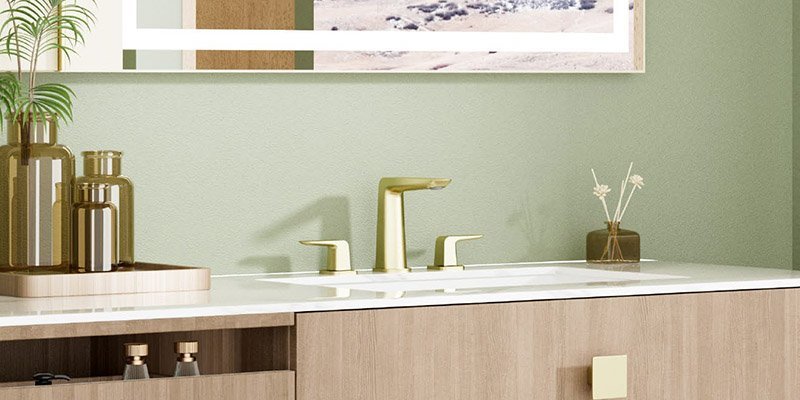
And What About a Widespread Faucet?
A widespread faucet is a three-piece set that consists of a separate spout and two separate handles—one for hot water and one for cold water. Each of these three individual components is installed through its own dedicated hole in the sink or countertop.
This separation is what gives the widespread faucet its signature grand and spacious appearance.
The Good Stuff (Pros)
The Not-So-Good Stuff (Cons)
When a homeowner chooses a widespread faucet, the decision often goes beyond simple function. It’s frequently a design choice meant to create a statement. The faucet’s separated components can offer a more traditional or classic feel. The adjustable spread of 8 to 16 inches allows for a customized layout, a feature not available in one-piece faucets. This can contribute to a more tailored bathroom design.
The Big Showdown: A Side-by-Side Comparison
To make things even easier, here’s a quick cheat sheet that puts all the key differences between single-hole and widespread faucets side-by-side. This will help you see at a glance which one might be the better fit for you.
| Feature | Single-Hole Faucet | Widespread Faucet |
|---|---|---|
| Look & Feel | Modern, Minimalist, Sleek | Classic, Elegant, Substantial |
| Installation | More straightforward | Harder (3 separate holes), often needs a pro |
| Cost | More Affordable (Product & Labor) | More Expensive (Product & Labor) |
| Best For | Small Bathrooms, Powder Rooms, Modern Designs | Large Vanities, Master Baths, Traditional Designs |
| Cleaning | Simpler to clean (One piece to clean around) | More Work (Three pieces to clean around) |
| Temp Control | Combined (One handle for flow & temp) | Precise (Separate hot & cold handles) |
| Footprint | Very Small | Large and Spaced Out |
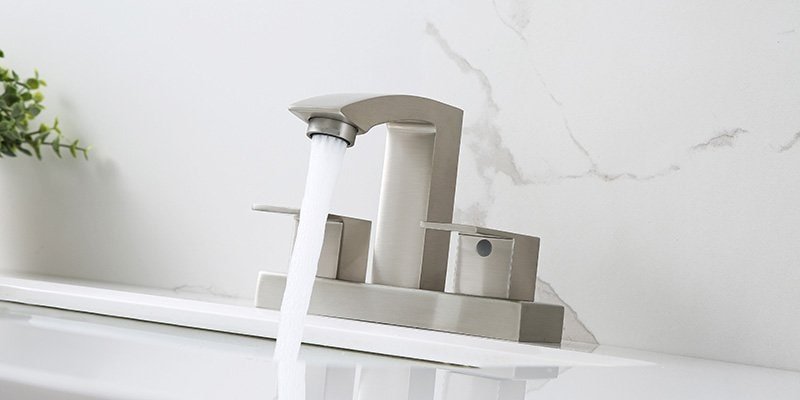
The Faucet No One Talks About: Meet the Centerset
Here’s where many bathroom renovations can go wrong. There’s a third type of faucet that often gets confused with the widespread model, and mixing them up can lead to a frustrating and costly purchasing mistake. This faucet is called the centerset.
A centerset faucet, like a widespread model, is designed for sinks with three holes. However, there is one crucial difference: on a centerset faucet, the handles and the spout are all connected and mounted on a single base plate.
This means the distance between the handles is fixed and cannot be changed. That fixed distance is almost always 4 inches from the center of the hot handle to the center of the cold handle.
Let’s make the distinction crystal clear
- Widespread Faucet: Three completely separate pieces with variable spacing between the handles, typically 8 to 16 inches.
- Centerset Faucet: One single, connected piece with a fixed handle spacing of 4 inches.
This matters immensely because your choice is dictated by the holes pre-drilled in your sink or countertop. If the holes are drilled 4 inches apart, you must buy a centerset faucet. A widespread faucet simply will not fit.
This is why the most important first step in choosing a new faucet is to grab a tape measure and check the distance between the holes on your existing sink. Making this distinction prevents one of the most common and avoidable renovation headaches
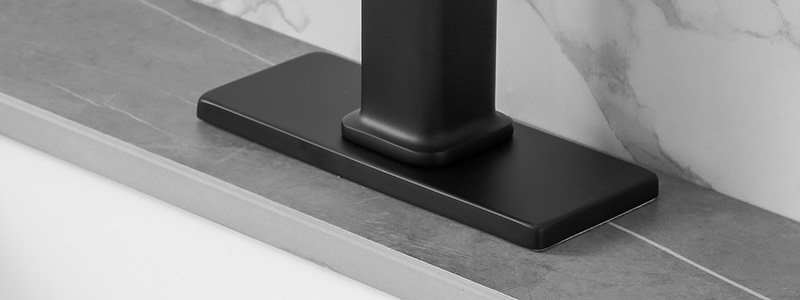
The “Magic” Adapter: What’s a Deck Plate?
So, what happens if you have a sink with three holes (likely drilled for a centerset or widespread faucet), but you’ve fallen in love with the sleek, modern look of a single-hole faucet? Don’t despair! There’s a simple and elegant solution for this exact scenario: an escutcheon, more commonly known as a deck plate.
A deck plate is a thin metal plate, designed to match the finish of your new faucet, that serves as a base. You install your new single-hole faucet through the center hole of the plate.
The plate itself is then mounted over the sink, and its width is designed to completely cover the two unused holes on either side. The result is a clean, seamless, and intentional look that perfectly bridges the gap between your new faucet and your old sink configuration.
This small piece of hardware is incredibly useful because it gives you the flexibility to install a modern single-hole faucet on a more traditional 3-hole sink without having to replace the sink itself.
In fact, many single-hole faucets come with a matching deck plate right in the box, anticipating this very common installation scenario.
5 Key Questions to Ask Before You Buy
Now that you know the lingo and the options, let’s get practical. Choosing the right faucet doesn’t have to be a guessing game. By answering these five simple questions, you can narrow down your choices and find the perfect faucet for your bathroom with ease.
What Does Your Sink Look Like? (The Non-Negotiable)
This is the most important question and the one you must answer first. Before you even start browsing online or in stores, look at your existing sink or countertop (or the one you plan to buy). How many holes are pre-drilled, and what is the distance between them? This will determine your options.
- 1 Hole: Your choice is simple. You need a single-hole faucet.
- 3 Holes, 4 Inches Apart: You need a centerset faucet. A widespread faucet will not fit.
- 3 Holes, 8 Inches or More Apart: You need a widespread faucet.
- 3 Holes (Any Spacing): You can use a modern single-hole faucet, but you will need to use a deck plate to cover the extra holes.
What’s Your Bathroom’s Vibe?
Your faucet is a key design element, so it should complement your bathroom’s overall style, not fight against it. Think about the look and feel you want to create.
- Modern, Minimalist, or Contemporary: A single-hole faucet is a natural fit. Look for clean lines, simple geometric shapes, and finishes like matte black, polished chrome, or brushed gold to complete the look.
- Traditional, Farmhouse, or Classic: A widespread faucet will feel right at home. Consider models with graceful curves, elegant details, or classic cross handles. Finishes like polished nickel, oil-rubbed bronze, or antique brass enhance this timeless aesthetic.
- Transitional: This style is all about blending the old with the new, giving you the most flexibility. You could use a sleek widespread faucet with simple lever handles or a single-hole model with slightly more traditional curves to perfectly bridge the gap between modern and classic.
How Much Do You Hate Cleaning?
Be honest with yourself about your tolerance for cleaning chores. This practical consideration can make a big difference in your day-to-day happiness with your choice.
- If you despise cleaning and want the lowest-maintenance option possible, the single-hole faucet is your best friend. Its one-piece design is incredibly easy to wipe down, with no extra nooks and crannies to worry about.
- If you don’t mind a little extra upkeep for the sake of a grander style, the widespread faucet is a beautiful option. Just be prepared to spend a bit more time cleaning around the three separate bases to prevent buildup.
For the faucet cleaning tips, you can read our guide:
How to Clean Your Bathroom Faucet: Tips for All Finishes
What’s Your Budget?
Bathroom faucets are available across a massive price range, but there are clear cost trends between the different types. Knowing your budget will help you focus your search.
- On a Tighter Budget: Single-hole and centerset faucets are generally the more affordable options. Prices can start as low as $60 to $100 for quality models. Their simpler installation can also save you money on labor costs.
- Willing to Invest: Widespread faucets occupy a higher price tier. They often start around $120 to $150 and can go up into the many hundreds of dollars for designer brands. You should also factor in the higher potential cost for professional installation.1
Are You Thinking About the Future?
This is a pro-level consideration that can save you headaches down the road. If you are doing a full renovation and have the opportunity to choose a brand-new sink and countertop, you have the power to plan for the future.
- For Maximum Flexibility: If you want to keep your options open for future updates, choosing a sink or countertop drilled for a widespread faucet is the smartest move. This configuration allows you to install a widespread faucet now, and then, ten years later, if you want to switch to a trendy single-hole model, you can easily do so by using a deck plate to cover the extra holes.
- For a Locked-In Look: Choosing a sink or countertop with only a single hole drilled is a commitment. It locks you into that style for the long term unless you are prepared to undertake another major renovation that involves replacing the entire vanity top.
If you want to know more about the faucet trends, please visit:
The Top Bathroom Faucet Trends for 2025 »
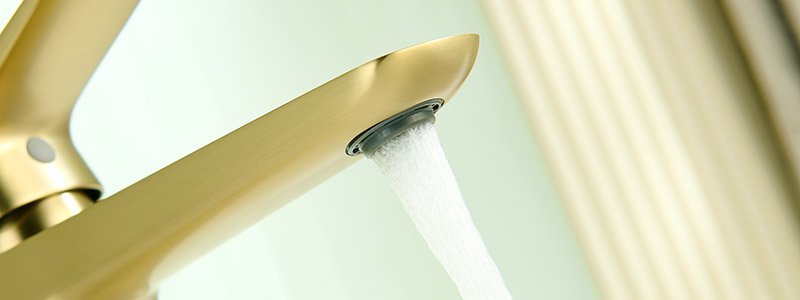
Busting a Big Myth: Does Faucet Type Affect Water Pressure?
It’s a common question: will a big, substantial-looking widespread faucet provide better water pressure than a smaller, sleeker single-hole model? It’s a logical assumption, but the answer is almost always NO.
The factor that truly governs how much water comes out of your faucet is the flow rate, which is measured in gallons per minute (GPM).
For water conservation, flow rates are regulated by the government. You may find some models on the market with an EPA WaterSense label, which indicates they meet certain water efficiency standards, often at a maximum flow rate of 1.2 GPM.
The choice between a single-hole and a widespread faucet does not impact the rate of water flow. The real functional difference lies in your ability to control the temperature mix of that flow. If you are experiencing low water pressure, the problem is almost certainly not your faucet’s style.
The issue is likely caused by something else in your home’s plumbing system, like old pipes, a partially closed shutoff valve, or, most commonly, a simple clog of mineral deposits in the aerator screen itself, which can be easily cleaned or replaced.
If you are experiencing low water pressure, you can read our post about:
Why Is My Bathroom Faucet Water Pressure Low: Repair Strategies »
The Final Verdict: Which Faucet Should You Choose?
There is no single faucet type that works for everyone. The right faucet is the one that is suitable for your bathroom, your budget, and your personal style. Let’s make the final call simple.
Choose a Single-Hole Faucet if:
- You have a small bathroom, a powder room, or a vanity with limited counter space.
- You love a clean, modern, minimalist, and uncluttered look.
- You are working with a tighter budget or plan on doing the installation yourself.
- You prioritize quick and easy cleaning above all else.
Choose a Widespread Faucet if:
- You have a large vanity or double sinks and want the faucet to be a grand statement piece.
- You prefer a classic, traditional, farmhouse, or luxurious aesthetic.
- Precise, intuitive, two-handle temperature control is a must-have feature for you.
- Your budget allows for a higher-end fixture and the potential cost of professional installation.
No matter which style you land on, you now have all the knowledge you need to walk into a store or browse online with confidence. You can choose a faucet that not only looks beautiful but also functions well for your needs—one that you’ll love using every single day. Happy renovating!
Related Posts



